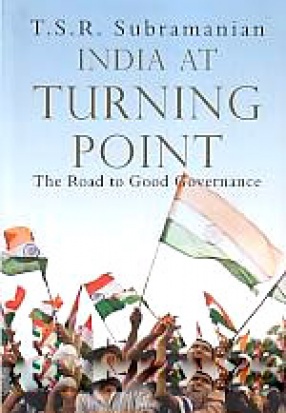There are many managers who don’t know how to read a balance sheet. Can you? If you’re one of those managers honest enough to admit that you don’t understand what your accountant is talking about half the time, then this book is for you. It is based on the authors’ unique business simulation, which successfully conveys to hundreds of managers the difficult concepts of finance in simple terms. It demystifies financial management by explaining how to understand: The Balance Sheet; Profit and Loss accounts; The difference between fixed and variable costs; The break-even analysis; Investment appraisal; Profitability, shareholder value and ROI; How to value a company; Depreciation and Amortization. Deliberately short on theory, the emphasis here is on understanding key principles and concepts and taking the action necessary to produce a working marketing plan. Read it, take the tests, absorb the advice and act on it. You will soon appreciate the benefits of rigorous marketing planning, such as: Less conflict about ‘where the company should be going’; Effective coordination of various marketing activities; a useful framework for a continuing review of progress; Matching resources to opportunities; Improved communication about market-related issues; knowing where sales and profits are coming from; More profitable marketing strategies. Cutting through all the usual rhetoric and technical jargon, this succinct guide takes you through the essential steps to using the Internet as a tool for competitive advantage and growth, covering Setting your objectives; Technology and design; your e-band; knowing your market; money matters and pricing; Customer management; Promotion; Security; Measuring results; Future trends. Designed to provoke thought as well as action, this book will also provide you with an understanding of key concepts and issues, such as: Where brands come from; The brand as an emotional charge; The brand as a personality; The brand as a mark of loyalty; The importance of a name; Whether to advertise; How much it costs. By following Peter Cheverton’s clear, step-by-step plan for identifying our key accounts, you will understand how to define, communicate and achieve the key objectives of KAM, such as: The retention of customers in a competitive environment; Growth of business through acquiring new customers; Managing global or regional customers consistently; managing customers serviced by different departments; creating a customer-intimate business; Achieving operational efficiency and excellence. Knowing just who our key customers are is the first step to developing a successful KAM strategy; this succinct, no-nonsense guide shows your how.
Management Library (In 5 Volumes)
$199.80
$222.00
In stock
Free & Quick Delivery Worldwide
All orders amounting to US$ 50 or more qualify for Free Delivery Worldwide. For orders less than US$ 50, we offer Standard Delivery at $14 per book.
ABOUT THE AUTHOR Brian Helweg-Larsen
Brian Helweg-Larsen is a global educator and partner of Profitability Business Simulations. He has spent the last 15 years developing business simulations to assist corporate change and improve financial results for clients including Abbott, Ford, Guinness, Nestle, Pfizer, Unilever and Zeneca, Brian teaches in three languages across five continents and runs the only business simulation used by the Harvard Business School’s MBA Programme.
ABOUT THE AUTHOR Malcolm McDonald
Prof. Malcolm McDonald enjoys a global reputation as a leading authority on marketing. He has written more books, advised more companies and lectured to more students on the subject than almost anyone else living. He is chairman of six companies and spends much of his time working with the boards of some of the world’s biggest multinational companies, such as IBM, Xerox and BP, in most countries in the world, including Japan, the United States, Europe, South America, ASEAN and Australia. He is also the non-executive Chairman of INSIGHT Marketing and People Ltd and Prof. Of Marketing and Deputy Director at Cranfield School of Management, UK. One of the world’s best-selling business authors with more than 30 titles to his name, Professor McDonald’s best-known title is his acclaimed Marketing Plans (Butterworth-Heinemann), now in its 5th ed., which his sold more than quarter of a million copies worldwide.
ABOUT THE AUTHOR Matt Haig
Matt Haig is a director of Peppermint PR, a successful communications company. He advises organizations of all types and sizes on how to integrate the Internet as a key tool into their marketing communications mix. Acclaimed for his no-nonsense pragmatic style, Matt writes regularly for the national and business press on all aspects of online business. He is also the author of several best-selling guides: E-PR: The Essential Guide to Public Relations on the Internet, The Sunday Times guide to E-Business Essentials, E-Mail Essentials, The E-Marketing Handbook, The B2B E-Commerce Handbook and Mobile Marketing: The Message Revolution.
ABOUT THE AUTHOR Peter Cheverton
Peter Cheverton is a director of INSIGHT Marketing and People Ltd., an international training and consultancy firm specializing in marketing and key account management, whose clients include both blue-chip multinationals and small owner-managed businesses. Operating in some 30 countries, current clients include AstraZeneca, Avecia, BP, BT, Dow Corning, Dulux, DuPont, glaxoSmithKline, Huntsman, ICI, JD Edwards, Pfizer, PPG, Qiagen and royalSunalliance.
ABOUT THE AUTHOR Robert Cinnamon
Robert Cinnamon is an educator with a global reputation. As a director of the international training and consultancy firm, INSIGHT Marketing and People, Robert runs his popular masterclass and in-company training programme, Demystifying Financial Management, which has helped hundreds of managers and company directors from small-and medium-sized businesses to major multinationals. Operating in some 30 countries, current clients include AstraZeneca, Avecia, BP, BT, Dow Corning, Dulux, DuPont, GlaxoSmithKlline, Huntsman, ICI, JD Edwards, Pfizer, PPG, Qiagen and RoyalSunAlliance.
reviews
0 in total
Review by Anonymous
Management Library (In 5 Volumes)
Be the first to review “Management Library (In 5 Volumes)” Cancel reply
You must be logged in to post a review.
Bibliographic information
Title
Management Library (In 5 Volumes)
Author
Edition
1st ed.
Publisher
ISBN
8124205426
Length
x+166p., x+198p., viii+152p., xii+180p., x+146p., Figures; Tables; Glossary; Index; 25cm.
Subjects
similar bookssee more
The Economics of Elementary Education in India: The Challenge of Public Finance, Private Provision and
India has one of the lowest ...
$31.50
$35.00





There are no reviews yet.